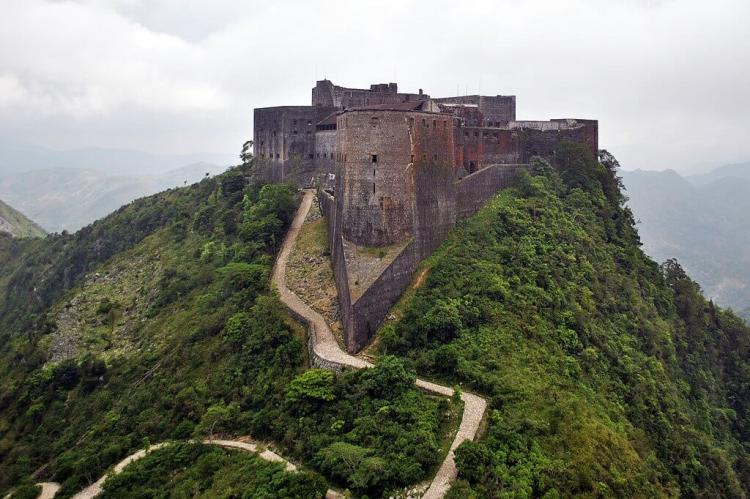The Massif du Nord: Haiti's Northern Natural Treasure
The Massif du Nord, also known as the Northern Massif, is a prominent mountain range in northern Haiti. It is crucial to the country's topography, ecology, and cultural heritage. The Massif du Nord is the western extension of the Cordillera Central in the Dominican Republic.
The Biodiverse Haven of the Massif du Nord: Haiti's Northern Treasure
The Massif du Nord, also known as the Northern Massif, is a prominent mountain range in northern Haiti. This significant geographic feature is crucial to the country's topography, ecology, and cultural heritage. As the western extension of the Cordillera Central that traverses the Dominican Republic, the Massif du Nord is a testament to Haiti's rich natural and historical landscape. Its geographic, ecological, and cultural significance includes diverse ecosystems, unique biodiversity, and historical landmarks.
Geographic and Geological Significance
Location and Formation
The Massif du Nord stretches approximately 100 kilometers (60 miles) in length and 30 kilometers (20 miles) in width. It reaches its highest point at Pic Pictet, which soars to an elevation of 2,664 meters (8,740 feet) above sea level. Other notable peaks include Morne Noir at 2,634 meters (8,641 feet) and Morne à Roche at 2,620 meters (8,595 feet). The range is geologically diverse, consisting of various rock types such as limestone, shale, and volcanic rock. Numerous caves and waterfalls scattered throughout the range further enhance this geological complexity.
Hydrological Features
A narrow northern coastal plain bordering the Caribbean Sea lies north of the range. The Guayamouc River flows south from the Massif du Nord, contributing to the region's hydrological network and supporting local ecosystems and communities.
Biodiversity
Flora and Fauna
The Massif du Nord is recognized as a global biodiversity hotspot, home to an astonishing array of species. Over 900 plant species thrive in this region, including 123 species of orchids. The range also hosts 31 species of frogs, 27 species of reptiles, and 73 species of birds. Notably, the Massif du Nord continues to be a site of new biological discoveries, particularly in amphibians and reptiles.
Endemic Species
The mountain range is a sanctuary for numerous endemic species found nowhere else. Some of the notable endemic species include:
- Hispaniolan solenodon (Solenodon paradoxus)
- Hispaniolan parrot (Amazona ventralis)
- Hispaniolan emerald (Chlorostilbon swainsonii)
- Hispaniolan woodcock (Scolopax dominicensis)
- Hispaniolan hutia (Plagiodontia aedium)
Ecosystems
Cloud Forest
The cloud forest, found at elevations above 1,500 meters (4,900 feet), is the most biodiverse ecosystem in the Massif du Nord. Characterized by high humidity and cool temperatures, this ecosystem supports a rich array of plant species, many of which are covered in moss and epiphytes such as orchids and ferns. Notable plant species in the cloud forest include:
- Hispaniolan pine (Pinus occidentalis)
- Hispaniolan oak (Quercus hispaniolana)
- Hispaniolan mahogany (Swietenia mahagoni)
- Tree ferns (Cyathea sp.)
- Orchids (Orchidaceae sp.)
Dry Forest
The dry forest ecosystem prevails at lower elevations and is characterized by its arid climate and thorny vegetation. This ecosystem supports species adapted to drier conditions, such as:
- Guayacan (Guaiacum officinale)
- Logwood (Haematoxylum campechianum)
- Cactus (Cactaceae sp.)
- Agaves (Agavaceae sp.)
Notable animal species in the dry forest include:
- Hispaniolan hutia (Plagiodontia aedium)
- Hispaniolan rock iguana (Cyclura cornuta)
- Hispaniolan woodpecker (Melanerpes striatus)
- Hispaniolan parrot (Amazona ventralis)
Coastal and Marine Ecosystems
In addition to its terrestrial ecosystems, the Massif du Nord encompasses coastal mangrove forests and marine ecosystems. These areas support a variety of marine life and provide critical services such as coastal protection and fishery resources.
Historical and Cultural Significance
National History Park
The Massif du Nord is home to the National History Park, a UNESCO World Heritage Site that includes the ruins of the Citadel Laferrière, Sans-Souci Palace, and the buildings of Ramiers. These historical landmarks testify to Haiti's rich cultural heritage and struggle for independence. The Citadel Laferrière, a massive fortress built in the early 19th century, symbolizes Haiti's resilience and fight against colonial powers.
Conservation Efforts and Challenges
The Massif du Nord faces several conservation challenges, including deforestation, habitat loss, and the impacts of climate change. Efforts to protect and preserve the region's unique biodiversity and ecosystems are ongoing, with various local and international organizations working towards sustainable solutions. These initiatives include reforestation projects, environmental education programs, and establishing protected areas to safeguard the region's natural and cultural heritage.
Conclusion
The Massif du Nord is vital to Haiti's natural and cultural landscape. Its diverse ecosystems, rich biodiversity, and historical landmarks make it an invaluable resource for the country and the world. By addressing conservation challenges and promoting sustainable development, the Massif du Nord can continue to thrive and contribute to Haiti's ecological and cultural legacy.
